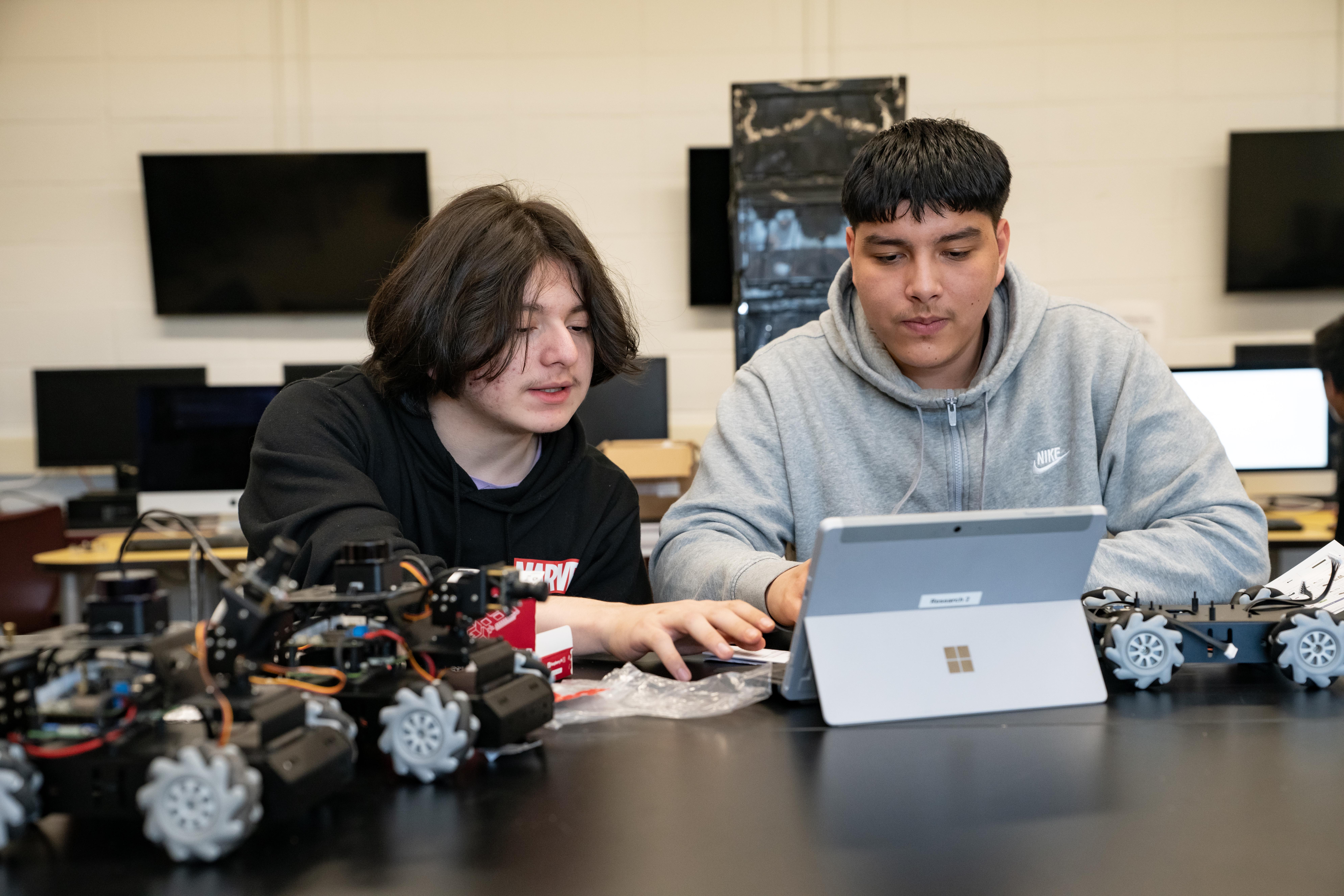
Robotics 101
🔍 Inside the Curriculum: A Deep Dive Into Robotics 101 – Land. Air. Sea.
May 15, 2025 — 3 minutes
Robotics education is evolving—and DroneBlocks’ new Robotics 101: Land. Air. Sea. curriculum is leading the way. Designed to help students develop real-world skills in robotics, coding, and engineering, this program offers a full year of hands-on, domain-specific learning across three exciting environments: land, air, and sea.
In this blog post, we take you behind the scenes of the curriculum to explore each quarter, the learning objectives, tools, technologies, and the innovative minds behind its creation.
🚀 What Is Robotics 101: Land. Air. Sea.?
Robotics 101 is a full-year, project-based STEM curriculum that takes middle and high school students on a journey through three major robotics domains—ground-based rovers, aerial drones, and underwater ROVs—before culminating in a capstone engineering project that challenges students to apply everything they’ve learned.
Each quarter is designed around NGSS- and CSTA-aligned learning outcomes and includes detailed lesson plans, assessments, teacher resources, and coding instruction in both block-based and Python programming.
📚 Curriculum Structure: Quarter by Quarter
Quarter 1: Land Robotics with the MentorPi Bot
Students kick off their robotics journey on solid ground. Using the Raspberry Pi-powered MentorPi bot, they learn the foundational principles of programming and motion.
Key Topics:
- Python programming and TurtleSim visualization
- Command line and terminal navigation
- Motion control using ROS2
- Sensor integration: LIDAR, buzzers, LEDs, cameras
- Remote control systems and obstacle avoidance
- Final Project: Design and build an autonomous ground robot
This quarter builds a strong base in coding logic, physical computing, and sensor feedback—skills that will carry into all later units.
Quarter 2: Aerial Robotics with the Crazyflie Drone
Next, students lift off into the world of aerial robotics. Through flight-based challenges and physics explorations, students master the Crazyflie drone in both manual and autonomous modes.
Key Topics:
- Physics of flight, Bernoulli’s principle, and real-world drone applications
- Hands-on flight using GUIs and simulators
- Programming autonomous flight paths in DroneBlocks and Python
- Environmental sensing and data analysis with Databot 2.0
- Mapping challenges and terrain simulations
- Final Project: Design and compete in a custom “Drone Golf” course
This unit fuses science and coding into a dynamic learning experience that takes STEM to new heights.
Quarter 3: Underwater Engineering with Custom ROVs
In Quarter 3, students become marine engineers. They build, solder, wire, and waterproof their own underwater remotely operated vehicles (ROVs) while learning key engineering and physics principles.
Key Topics:
- Circuit design, soldering, and controller building
- Buoyancy, propulsion, and frame construction
- Environmental science and sensor integration
- Data collection in water using Databot 2.0
- MicroBlocks coding and simulation with vPerch
- Final Mission: Map underwater terrain and navigate through ROV challenges
This is one of the most hands-on quarters, reinforcing engineering design, environmental awareness, and scientific thinking.
Quarter 4: The Capstone Experience
In the final quarter, students take the lead with a self-directed capstone project. They choose their favorite domain—land, air, or sea—and apply all their skills to design, build, test, and present an original robotic system.
Key Activities:
- Project pitching and proposal development
- Research, blueprinting, and milestone planning
- Iterative design, engineering, and programming
- Peer and mentor feedback loops
- Final public presentation or demonstration
The capstone is where students transition from robotics learners to robotics innovators—showing not just what they know, but what they can create.
🧑🏫 Built by Educators, for Educators
Robotics 101 was created by the team at InnovatED STEM, a group of passionate STEM educators, researchers, and engineers with decades of combined experience. Their mission: to make advanced STEM education engaging, approachable, and rooted in real-world applications.
Meet the curriculum creators:
- Frederick Feraco – Software engineer, STEM researcher, and drone innovator
- John Karavias – Marine biologist and field science expert
- David Herbert – Engineering educator and competitive robotics coach
- Dr. Robert Krakehl – Physics professor and educational equity researcher
With their guidance, every unit connects theory with practice, ensuring students don’t just learn robotics—they live it.
🎒 What’s Included in the Robotics 101 Program?
When you adopt the Land. Air. Sea. curriculum, you receive:
- Full digital curriculum access (PDF + Google Docs)
- Pacing guides, assessments, and student worksheets
- Block and Python code samples
- Custom video tutorials and teacher guides
- Integration with DroneBlocks’ coding platform
- Support for MentorPi, Crazyflie, and ROV kits
- Optional bundles with hardware, tools, and accessories
🎯 Who Is This For?
Robotics 101 is designed for:
- Middle and high school STEM or robotics classes
- CTE and engineering programs
- Afterschool or summer enrichment
- Schools looking to expand hands-on coding and technology access
- Teachers who want a ready-to-teach robotics curriculum with real results
No prior experience with robotics is required—just curiosity and a willingness to explore.
💡 Ready to Transform Robotics Education?
Robotics 101: Land. Air. Sea. isn’t just another STEM program—it’s a gateway to real-world problem-solving, exploration, and innovation. Your students will learn to think critically, work collaboratively, and build with purpose.
Shop More Products
From classroom-friendly kits to hands-on tools: Explore our hardware, packages, and accessories tailored for the educational journey.